- Do you subscribe to Dharma Dog Training’s Newsletter? You should.
- A Unique Campaign from The Humane Society of the United States
- Rabid bats in Omaha- Stay safe, prepared with these tips
- Springtime Activities in Omaha
- Mill Dog Monthly from Bailing Out Benji
- World Spay Day, Legislative Alert in Nebraska
- Attend the Nebraska Rescue Council’s monthly meeting this Saturday
- Five Hard-to-Ignore Reasons to Adopt!
- Paws in Pink to Benefit Breast Cancer Foundation
- VCA, Inc. Acquires MidWest Vet Specialists from Kansas State University
Emergency! An inside look at emergency animal care
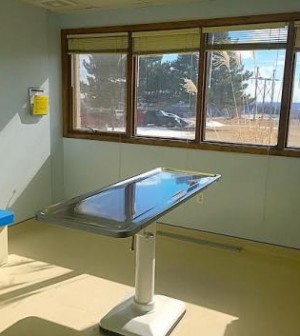
You have likely seen a television show featuring a perspective camera shot, looking up from a patient-on-a-gurney’s point of view, as medical professionals wheel him or her through the halls of an emergency room. Gunshot, stab wound, bear attack- whatever the patient is there for doesn’t matter; what’s important is to show the maniacal nature of the ER and how things are unpredictable, dynamic and stressful. God forbid you can recall an event when you were the one occupying the gurney.
Does this really happen? Yes. Does it happen in an animal hospital? Yes to that, too.
I recently introduced myself to Shawna Burke, a vet tech at Bellevue Animal Hospital, and was immediately made aware of the passion she has for her job. After a simple inquiry about stories our readers might want to hear, any events or promotions the hospital would like to promote or news about trends in the veterinary industry, I received something that looked like what is below. Shawna refined her response and took photos of the facility, all in hopes of communicating the emergency events that she and her colleagues participate in at work.
Here’s her story… I’ve not changed a word so you can hear just what’s happening from her view:
You are the first to arrive at the owner’s car, eyes peering for your patient. A 4-year-old chocolate Labrador retriever, usually testing the strength of his leash to give kisses, is laying on his side panting with a purplish-blue tongue. His chest is rising and falling so quickly, his throat creates almost a croaking sound. His head and limbs are listless. You know instantly he needs oxygen and all hands on deck to save him.
In the background, you hear your team members running toward you with the transportation cart. As you barely climb in the back seat, you look up to see your help has arrived. Within seconds, he’s on the cart moving toward the treatment area while the owner is frantically telling us what happened: the midmorning, July heat paired with high humidity quickly created a lethal sauna. Her emotions are palpable. As we turn toward the side entrance door, the sunlight reveals petechiea (small areas of bleeding under the skin) on his abdomen and your heart sinks. You check his gums and inside his floppy ears…they are there as well. This grave situation just became more serious. I exchange glances with my teammates as the gravity of his situation hit us…we all know EVERY second matters. With one swift motion, he is laid on our counter where a swarm of quick-minded staff members work together like honey bees.
His temperature reads 108 degrees F. More ice is added to the cooling water blanket that is directly beneath him. His fur is being wiped down with a cool towel as the fan blows the heat off his skin…and away from his organs. Simultaneously, his eyes are lubed to protect his corneas from drying damage prior to oxygen administration. Immediately, an oxygen mask over his muzzle is provided due to his brain’s increased oxygen demand and the overall coolness of the gas will only aid to decrease the temperature of his body. The hum of the clippers blend perfectly into the white noise of his emergency as they swiftly remove his chocolate-colored fur; he needs an IV.
You are able to place an intravenous catheter despite his drastically low blood pressure, so room temperature IV fluids can be run at shock dose. His eyes are slightly dilated and slowly gaze off in the distance.
A dog that previously required three people to perform a nail trim isn’t resisting the twelve procedures simultaneously being performed on him right now.
An ice pack is placed on his head to cool his brain as another tech draws blood to evaluate the “penetration” and damage of the heat. His body has turned into a visceral-traumatizing oven! Every cell and type of tissue, including bone marrow, can be gravely affected. You tell him, “It’s ok buddy…it’s ok sweetheart,” as you hook him up to an ECG, hoping no arrhythmias are observed. Everything is happening at the same time. People are reaching over one another, leaning next to each other. We are all calling out what we need and what the current vital stats are in concise, fragmented sentences. “Temperature 106.8F now.” “Second IV catheter placed. 20 gauge by 2 inch. Right rear leg.” “Need new gel ice pack for his head.” “Systolic up to 100mmHg now.” “Chemistry results are printing!” “Nucleated red blood cells seen on bloodsmear. Bone marrow affected.” “Premature ventricular contractions seen on ECG. Couplettes. Trigeminy. Multi-focal.” Each statistic is swiftly documented on our emergency management sheet.
Rotating staff members are constantly wiping down his coat with cool water, ensuring he is never soaked in cold water. For this would cause the vessels to constrict down, sending the heat dangerously back to his organs. Within our thoughts, we are focused on meeting his needs, what we fear is still happening, and what we hope…in the end…doesn’t happen. The mood of the practice is draped with the sense of urgency, but executed with a controlled stillness. We know what the next person is doing and why. We predict each other’s next moves with a choreographed rhythm.
Our thoughts overlap. One core unit with many arms. One focus. One goal. Save him.
Shawna Burke, LVT, B.S. VT, began her journey into the vet field in 2005. “As far back as my memory will stretch,” she says, “warm moments were exchanged between me and animals.” She says they have the ability to slow the world down and just let in joy. “They are my sunshine…my heart healers.” Shawna felt drawn to protect them and be there for them, the way they effortlessly do for her. “A deeper knowledge of veterinary medicine was what I felt they deserved from me, so I began with my veterinary technician education and advanced to my Bachelors degree in Veterinary Technology to become a Veterinary Technologist.” She mixes her education with her passion and work with the mindset to be there “for them.” Even if this means holding them in her arms as the last gentle beats of their hearts are felt in the palm of her hand, she’ll be there. “They simply give back in ways our language can’t encompass,” she says.
Shawna has a special story about one animal that has stuck with her over the years: “I’ll never forget this very special furbaby. She was so incredibly ill that as they were carrying her limp body into Room 4, her pale tongue was hanging out of her mouth. I spent day after day of nonstop treatments, whispering to her as I kneeled into her oxygen cage. I hoped my words softened any fear or pain she was fighting. If it wasn’t for our doctor, who diagnosed a rare condition in Nebraska, she would not have made it. Every time she routinely returns, she transforms from a docile sweetheart to a happy-hopping, howling darling when her eyes meet mine. I know she is saying thank you…I just know it!”
Shawna is obviously passionate about animals and her job at Bellevue Animal Hospital. We’re happy to have people like her in our pet community and hope there are hundreds of others just like her.
Related Posts
Latest News
-
What Signs to Look For When My Pet Has a Cold
You have probably heard the expression, “sick as a dog.”...
- Posted 2 weeks ago
- 0
-
How Often Should I Groom My Pet?
Do you have a grooming ritual for your furry friend?...
- Posted 3 weeks ago
- 0
-
From Kibble to Cuisine: Finding the Perfect Food For Your Pet
Do you ever wonder what the difference is between regular...
- Posted 1 month ago
- 0
-
The Essential Guide to Pet Care: Meeting Your Furry Friends Basic Needs
Are you a first-time pet owner and need to know...
- Posted 1 month ago
- 0
-
Say Cheese! Tips for Keeping Your Pet’s Pearly Whites Clean
Did you know that keeping your dog or cat’s teeth...
- Posted 2 months ago
- 0
-
Feeding Frenzy: How Often Should You Fill Your Pet’s Bowl?
Are you unsure how much food to give your dog...
- Posted 2 months ago
- 0
-
How to Prepare Your Pet for Spring
Winter is in full force, but spring will be here...
- Posted 2 months ago
- 0






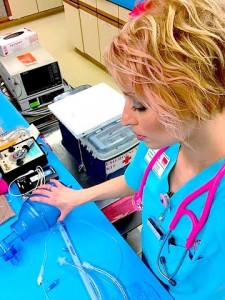



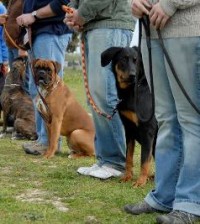
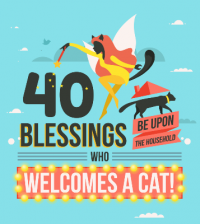
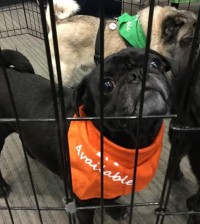

















You must be logged in to post a comment Login